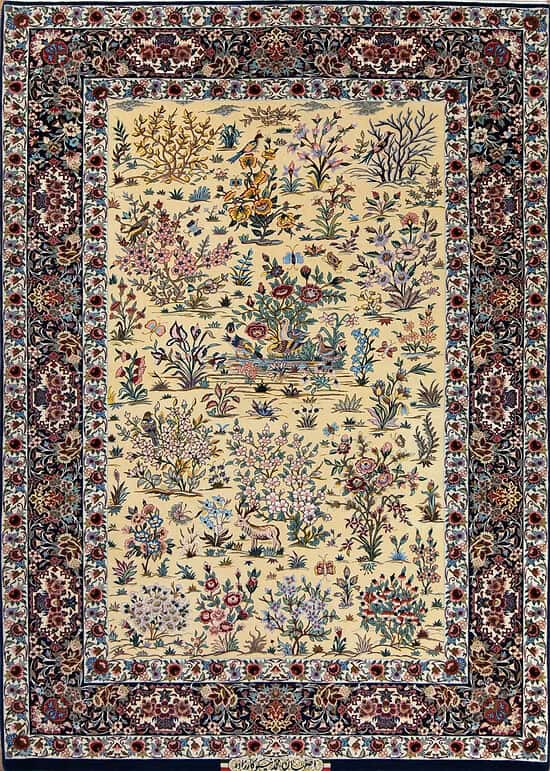Rugs and interior design are correlated. The art of elevating a space, accentuating its charm, and harmoniously blending its decorative elements is the essence of interior design. A well-executed interior design plan can instantly transform any space, uplifting a dull room into a warm, inviting haven for both inhabitants and guests. One crucial and often underestimated component of interior design is the strategic use of rugs, the veritable “tapestries for the floor.”
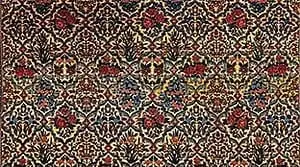
In this essential guide, we delve into the world of rugs, examining their functional and aesthetic significance and imparting insights on how to choose, maintain, and truly appreciate these beautiful floor adornments that have the power to rejuvenate any living space.
By the end of this post, you’ll be well-equipped to transform a simple floor into a breathtaking masterpiece that elevates any interior design project.
What are rugs?
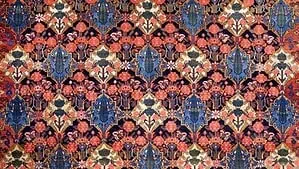
At first glance, rugs, carpets, and mats might seem similar, but they hold distinct differences that make them unique. So, what exactly is a rug? A rug is a textile floor covering made of various materials, including wool, silk, cotton, or synthetic fibers. Weavers craft rugs by knotting, tufting, or weaving, giving them distinct textures and designs. They come in various shapes, sizes, and styles, offering a myriad of choices to suit the aesthetics of any living space.
Rugs vs. Carpets
While many often use the terms ‘rug’ and ‘carpet’ interchangeably, they are not identical. Here’s how rugs and carpets differ:
- Size: Generally, carpets are larger than rugs and often span the entire room or a significant part of the floor. On the other hand, rugs are smaller, covering specific areas or acting as accents in a room.
- Installation: Carpets usually require professional installation, as they are typically fastened to the floor with adhesives or tack strips. This process is unlike rugs, which can be easily placed, moved, or removed according to your interior design needs.
- Cleaning and Maintenance: Rugs are much easier to clean and maintain compared to carpets. Smaller rugs can be shaken or vacuumed, while larger rugs can be taken away for professional cleaning. Meanwhile, carpets may require spot treatments or steam cleaning since they are affixed to the floor.
Rugs vs. Mats
Mats share some similarities with rugs but have distinct traits that set them apart:
- Purpose: Mats are primarily designed with a functional purpose in mind, such as providing a surface to wipe shoes or offering cushion and support in areas where people stand for long periods. Rugs, on the other hand, are more decorative, adding texture, pattern, and color to a living space.
- Material: Since mats are meant for heavy-duty use, they are made of materials such as rubber, coir, or other durable fibers. Rugs come in a more extensive array of materials, from luxurious silk to hand-woven wool, to suit various styles and preferences.
- Aesthetics: Mats are often simplistic in design and are available in limited colors or patterns. In contrast, rugs come in diverse designs, intricate patterns, and vibrant colors, adding a decorative touch to a room.
What are the types of rugs?

There are various types of rugs you can choose from, each distinguished by its unique characteristics and expressive design. Ultimately, the right rug for your space will depend on your personal style, taste, and the existing décor.
1. Traditional Rugs
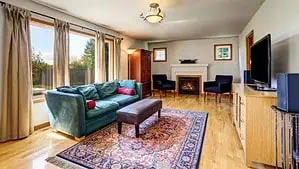
If your goal is to achieve a timeless, elegant look, traditional rugs are an excellent choice. These rugs typically feature intricate patterns and motifs that draw inspiration from European, Persian, and Oriental design elements. Traditional rugs can be further classified into various subtypes, such as Aubusson, Savonnerie, and Turkish, based on regional differences. The detailed designs, rich colors, and the sense of history these rugs bring into a room make them a popular choice for homeowners and designers alike.
2. Modern Rugs
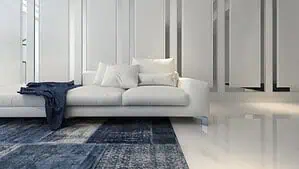
If you’re more inclined towards a contemporary, minimalist aesthetic, modern rugs are the way to go. Modern rugs feature clean lines, geometric patterns, or abstract designs that create a stylish statement without overpowering the room. By using a wide range of materials, textures, and colors, modern rugs perfectly complement the sleek, streamlined look associated with contemporary interior design.
3. Oriental Rugs
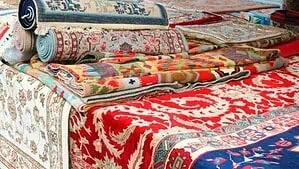
A staple in interior design for centuries, Oriental rugs originate from the East, specifically in countries like Iran, India, Pakistan, Afghanistan, China, and Turkey. These rugs are handcrafted with natural fibers and dyes, making each one unique and rich in both heritage and character. Oriental rugs are known for their elaborate patterns, often featuring elaborate floral, botanical, or geometric motifs that reflect the traditional craftsmanship of their respective regions.
4. Tribal Rugs
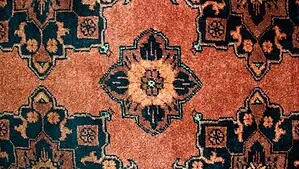
Many regions around the world have distinctive tribal rug-making traditions that are passed on through generations. These rugs boast a bold, rustic charm that is hard to replicate. Each tribal rug represents the weaver’s unique interpretation of their culture, making these rugs truly one-of-a-kind pieces. While there are many tribes known for their rug-making skills, some well-known tribal rugs include those from the Berber tribes in North Africa and the Navajo tribes in the United States.
The importance of rugs in interior design
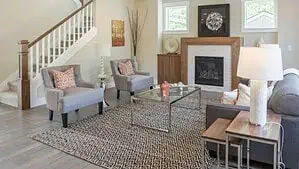
One of the primary reasons rugs are essential in interior design is their ability to add warmth, texture, and color to a room. A rug with an interesting texture, such as a shag or jute rug, can add an additional layer of dimension to your space, making the room feel more inviting and comfortable.
Aside from their aesthetic appeal, rugs also serve a number of functional purposes. For one, they are excellent at absorbing sound, which can help to create a more serene and peaceful atmosphere in your home. Rugs also provide insulation, keeping your floors warm during colder months and protecting them from scratches and wear and tear.
Another key contribution of rugs to interior design is their ability to create a focal point and tie together different design elements. By choosing a rug that complements the colors of your furniture, artwork, and other accessories, you can establish a cohesive look and feel in your room. Additionally, you can use a rug to define a specific area in an open-concept space, such as a seating arrangement or a dining alcove.
Rugs can be used in virtually any room in your home to great effect. In the living room, a large area rug can create a sense of warmth and unity in your seating arrangement. In the bedroom, a rug placed beneath the bed can add a touch of luxury and comfort while also protecting your floors from the wear and tear of daily foot traffic. And if we talk about the dining room, an appropriately sized rug can anchor your dining table and chairs, creating a cozy and inviting atmosphere for family meals and gatherings.
How to choose the right rug?
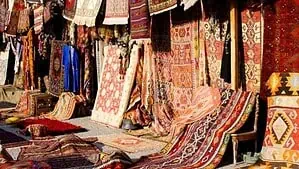
With countless options available, how do you choose the right rug for your space? Here are the key considerations to keep in mind when selecting a rug, ensuring that you make a choice that perfectly fits your décor and lifestyle:
1. Size matters
Before stepping foot into a rug store or searching online, take a moment to measure your space. To create a cohesive look, have your rug large enough to tuck beneath the front legs of your furniture, and bear in mind that an extra-small rug may appear lost in a vast room.
2. Shape it up
Rectangular rugs are a classic choice, but don’t be afraid to experiment with other shapes, such as circular or oval rugs, to add a unique touch. Consider the architecture of your room and opt for a shape that complements your existing furniture arrangement.
3. Color your world
As a rule of thumb, begin with the rug if you’re starting from scratch with your room decor since it’s easier to match paint or upholstery to a rug rather than the other way around. If you’re adding a rug to an existing space, draw inspiration from the room’s dominant color or accent hues. A well-chosen rug can either be a subtle focal point or a bold statement, but it should never clash with the surroundings.
4. Pattern play
From traditional Oriental designs to abstract modern motifs, the world of rug patterns offers endless possibilities. Choose one that either complements your room’s overall aesthetic or adds a touch of contrast for visual interest. If your furniture and walls are already visually busy, opt for a more subdued rug pattern, and vice versa.
5. Material selection
Different materials offer different benefits, so it’s essential to find a rug that’s well-suited to your needs. Wool is a popular choice for its durability and natural resistance to stains and water. Synthetic fibers, such as nylon and polyester, are easy to clean, affordable, and ideal for high-traffic areas. Natural fibers like jute, sisal, and sea grass offer an earthy texture but are more challenging to clean.
Lastly, always consider the room’s function, expected foot traffic, and existing decor when choosing your rug. A rug that’s perfect for a quiet bedroom may be unsuitable for a bustling living room or a dining area.
By taking the time to understand your space and carefully weighing the factors outlined above, you’ll be well on your way to finding the perfect rug to enhance your home.
How to measure a room for a rug?
Here are some tips to help you accurately measure your room and determine the right size and shape of rug for your space:
- Use a tape measure to take the width and length of the room. Take note of these dimensions, as they will be crucial in determining which rug sizes are suitable for your space.
- Measure the most important areas where you’d like to place the rug, such as under furniture or in an open space. This will help you determine if a square, rectangular, or round rug is most appropriate for your room.
- Think about the purpose of the rug. For example, if you want to use it to define a seating area, measure the space, including the seating arrangement and note the dimensions. This will ensure that the rug size you choose is appropriate for the intended area.
- Keep the room’s size and layout in mind when choosing the rug shape. Rectangular rugs, for example, can help create a sense of order in a rectangular room, while round rugs can help to soften the angles in a square room.
With the right combination of size, shape, color, and pattern, your rug will add an inviting and elegant touch to your room. So, roll out the rug and enjoy the stylish transformation it brings to your space!
Caring for your rug

Proper rug care is essential for maintaining the appearance and durability of your prized possession. Regular cleaning prevents the buildup of dirt, dust, and allergens, which can damage the rug’s fibers, leading to premature wear and tear. Moreover, proper care can help to maintain and even enhance the rug’s colors and patterns, ensuring its lasting appeal and value.
Rugs are made of several materials, and each type requires specific care and cleaning techniques to ensure their longevity.
- Wool Rugs: Wool rugs are durable and naturally resistant to dirt and stains, but they should be vacuumed regularly to remove dust and dirt. When spot cleaning is necessary, use a gentle detergent and water, being careful not to saturate the rug’s fibers. Dry the area immediately with a clean towel and avoid exposing the rug to direct sunlight.
- Silk Rugs: Silk rugs are delicate and require special care, such as avoiding exposure to direct sunlight to prevent fading. Vacuuming should be done using a brushless suction head to avoid damage to the fibers. If you need to spot clean, use a gentle detergent mixed with cold water and dab the stain gently without rubbing it. For more significant cleaning, consult a professional rug cleaner.
- Cotton Rugs: Cotton rugs are generally machine washable, making them easy to care for. However, it’s crucial to check the care label for specific cleaning instructions. If machine washing is not advised, spot-clean the rug using mild detergent and cold water.
- Synthetic Rugs: Synthetic rugs, such as those made from polyester or polypropylene, can be vacuumed, spot cleaned, or even hosed down for outdoor rugs. Use a mild detergent and water to spot clean, being sure to rinse thoroughly to remove any residue.
Tips for rug maintenance
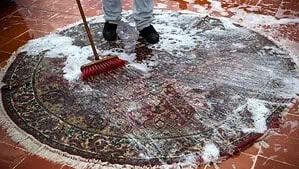
To ensure that your rug stays looking fresh and lasts as long as possible, follow these simple tips:
- Prevent stains by placing a rug pad underneath your rug. This will also prevent slippage and add extra cushioning for comfort underfoot.
- Vacuum your rug regularly, at least once a week, to prevent dirt and dust buildup. Keep in mind to use appropriate vacuum attachments and techniques based on your rug type – for example, using a brushless attachment for silk rugs.
- To avoid wear patterns and sun damage, rotate your rug every six months, especially in high-traffic areas or areas exposed to direct sunlight.
- Spot clean stains as soon as possible, but always test an inconspicuous area first to ensure that the cleaning product does not damage the fibers or colors. Remember to dab, not rub, to prevent damage.
- If you spill liquid on your rug, blot the spill with a clean, dry cloth to prevent the liquid from seeping into the rug pad or flooring.
Importance of professional cleaning and rug repair
Firstly, professional cleaning distinguishes itself from the occasional vacuum or spot cleaning. Simply put, expert rug cleaners utilize advanced techniques and equipment to remove deeply embedded dirt, allergens, and grime that DIY attempts might miss. Moreover, they’ll determine the best cleaning method based on your rug’s material and construction, preserving and enhancing its vibrancy and value.
When it comes to rug repair, skilled artisans can breathe new life into damaged or worn-out rugs. From re-weaving, patching, re-piling, or fixing fringes – they restore the structures, colors, and patterns meticulously, safeguarding the original artistry and extending the lifespan of your cherished rug.
So, don’t underestimate the importance of professional cleaning and rug repair services. Give your rugs the care they deserve and watch them flourish, beautifying your home for times to come.
Conclusion: Are rugs worth it?
After exploring the use, value, and importance of rugs in interior design, it’s clear that rugs are indeed worth the investment. Rugs not only add warmth, texture, and color to a room, but they also provide functional benefits like sound absorption, insulation, and floor protection. Choosing the right rug for your space and properly caring for it can enhance your living space for years to come.
If you’re in need of expert rug cleaning services in Chicago, look no further than Beautiful Rugs. With our professional and eco-friendly cleaning methods, you can trust that your rugs will be well taken care of and restored to their original beauty. Don’t hesitate to reach out for all of your rug cleaning needs.
Investing in a quality rug is a decision you won’t regret. Not only will it enhance the aesthetic appeal of your home, but it will also provide practical benefits and can even become a treasured family heirloom. So, what are you waiting for? Add a beautiful rug to your home décor today and enjoy the many benefits it has to offer.
FAQ
What is the meaning of rugs?
Rugs are a type of textile floor covering that is typically smaller than a carpet and is used as a decorative element in interior design.
Is rug a blanket?
No, a rug is not a blanket. A rug is a floor covering made of various materials for home decoration, while a blanket is typically made of fabric used to keep warm.
What is a bed rug called?
A bed rug is commonly referred to as a bedside rug or a bedside area rug.
What kind of rug is popular?
There are various types of rugs that are popular in interior design, such as traditional, modern, oriental, and tribal rugs.
Is a rug a type of furniture?
No, a rug is not a type of furniture. It is a floor covering that can complement and enhance the overall look of furniture in a room.
Do rooms and Interior design need a rug?
Rug and interior design are correlated. Rug is a final touch to your home décor as they add warmth, texture, and color to a room, as well as provide functional benefits such as sound absorption and protection for floors.
Is a rug a decoration?
Yes, a rug is a decorative element that can enhance the overall aesthetics of a room.
Are rugs good for living room?
Yes, rugs are commonly used in living rooms as they can add warmth, texture, and color to the space, as well as define different areas within the room.


